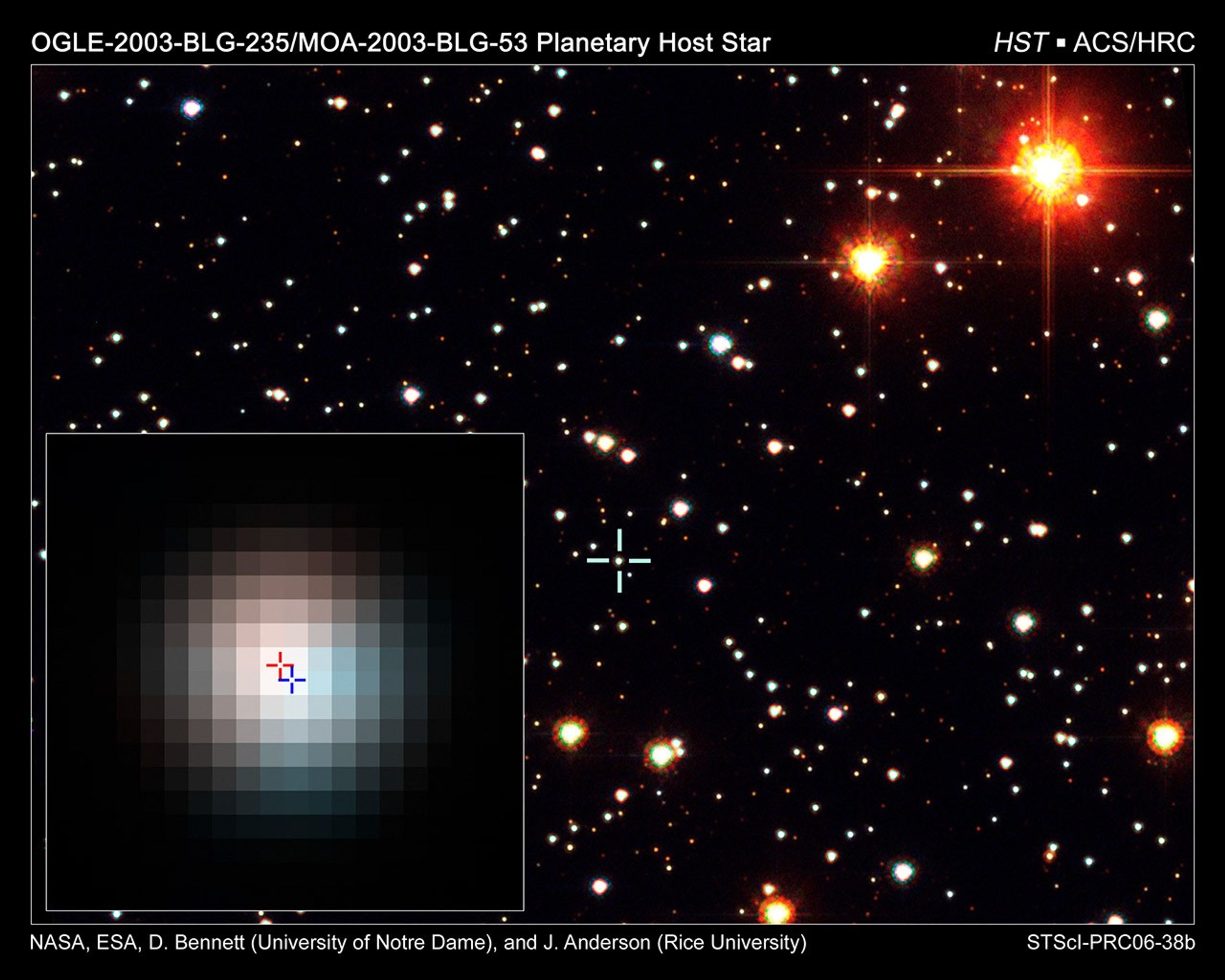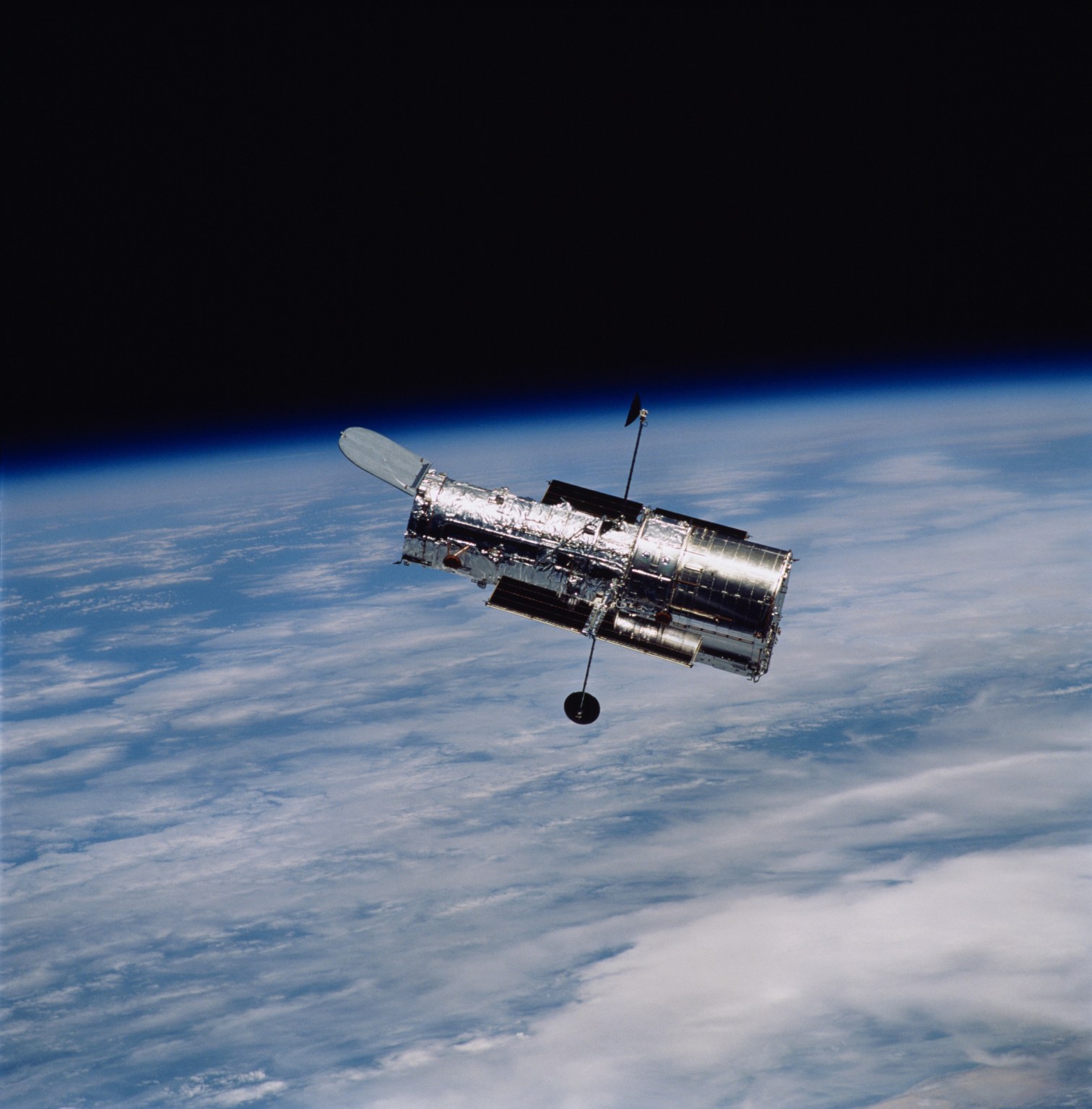1 min read
Target Region for Panetary Host Star OGLE-2003-BLG-235L/MOA-2003-BLG-53L

About the Object
- R.A. PositionR.A. PositionRight ascension – analogous to longitude – is one component of an object's position.18h 5m 16.36s
- Dec. PositionDec. PositionDeclination – analogous to latitude – is one component of an object's position.-28° 53' 42.0"
- ConstellationConstellationOne of 88 recognized regions of the celestial sphere in which the object appears.Sagittarius
- DistanceDistanceThe physical distance from Earth to the astronomical object. Distances within our solar system are usually measured in Astronomical Units (AU). Distances between stars are usually measured in light-years. Interstellar distances can also be measured in parsecs.19,000 light-years (5.8 kiloparsecs)
About the Data
- Data DescriptionData DescriptionProposal: A description of the observations, their scientific justification, and the links to the data available in the science archive.
Science Team: The astronomers who planned the observations and analyzed the data. "PI" refers to the Principal Investigator.This image was created from HST data from proposals 10426 I. Bond (Massey University), D. Bennett (University of Notre Dame), M. Jaroszynski (Warsaw University), B. Paczynski (Princeton University), N. Rattenbury (University of Manchester), A. Udalski (Warsaw University), and P. Yock (University of Auckland). The science team comprises: D. Bennett (University of Notre Dame), J. Anderson (Rice University), I. Bond (Massey University, Auckland, New Zealand), A. Udalski (Warsaw University Observatory), and A. Gould (Ohio State University) - InstrumentInstrumentThe science instrument used to produce the data.HST>ACS/HRC
- Exposure DatesExposure DatesThe date(s) that the telescope made its observations and the total exposure time.May 1, 2005, Exposure Time: 2.3 hours
- FiltersFiltersThe camera filters that were used in the science observations.F435W (B), F555W (V), F814W (I)
- Object NameObject NameA name or catalog number that astronomers use to identify an astronomical object.OGLE-2003-BLG-235L/MOA-2003-BLG-53L
- Object DescriptionObject DescriptionThe type of astronomical object.Planetary Host Star
- Release DateAugust 8, 2006
- Science ReleaseHubble Identifies Stellar Companion to Distant Planet
- Credit

This image is a composite of many separate exposures made by the ACS instrument on the Hubble Space Telescope using several different filters. Three filters sample broad wavelength ranges, one isolates the light of hydrogen. The color results from assigning different hues (colors) to each monochromatic image. In this case, the assigned colors are: Blue: F435W (B) Green: F555W (V) Red: F814W (I)

Related Images & Videos

Artist's View of Planet Around a Red Dwarf
This is an artist's concept of a gas giant planet orbiting a red dwarf K star (system name OGLE-2003-BLG-235L/MOA-2003-BLG-53L). The planet has not been directly imaged, but its presence was detected in 2003 microlensing observations of a field star in our galaxy. Gravitational...

Identification of Exoplanet Host Star
This is a Hubble Space Telescope view of a small region of our galaxy where the host star to a gravitationally lensed planet (catalogued as OGLE-2003-BLG-235L/MOA-2003-BLG-53L) is located. The star is identified by the crosshatch at frame center. The planet was first identified...

Identification of Exoplanet Host Star
[bottom left text] Hubble Space telescope observed and identified the host star to a gravitationally lensed planet first discovered in 2003 by ground-based telescopes. [left box] A foreground red star and planet drifts toward the sky position of a much farther sunlike...
Share
Details
Claire Andreoli
NASA’s Goddard Space Flight Center
Greenbelt, Maryland
claire.andreoli@nasa.gov































